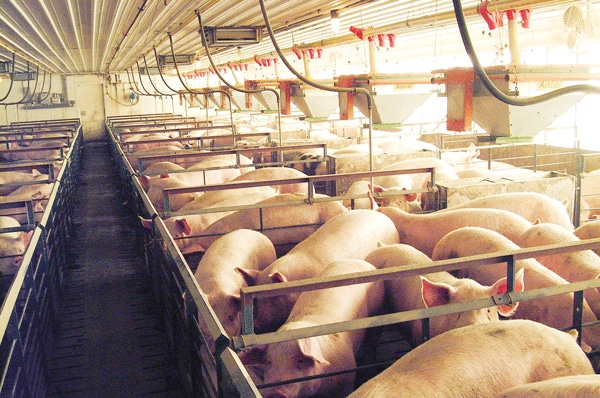March 1, 2011

With the pork industry walking a tightrope between high hog prices and high feed prices, consumers will begin seeing the consequences — record high prices for pork.
“Producers will be receiving record-high prices for their hogs, but also paying record high prices for feed,” said Chris Hurt, a Purdue University Extension economist. “The outlook is in balance right now as hog prices are expected to be high enough to cover feed prices. However, the consequence of losing that balance could have extreme financial consequences on producers if consumers balk at high pork prices or weather threatens 2011 crops.”
Why are corn and hog prices moving in the same direction? Hurt said one reason is that meat supplies have been sharply reduced over the past four years.
“Hog producers had a major erosion of equity and have little ability to continue production if feed and hog prices get out of balance,” Hurt said. “If feed prices increase, there is a perception that pork production will almost immediately drop thus increasing hog prices.”
Another reason Hurt cited is that United States and world food prices are all moving higher.
“We are in a period of generally rising prices, and that means inflation will tend to increase prices of all food products,” he said. “Different products will move up at different rates depending on their individual supply and demand situation, but inflation raises ‘all ships.’ Almost all commodity prices are currently increasing as a result of strong demand relative to supplies, but perhaps additionally stimulated by accommodative monetary policy by the U.S. Federal Reserve.”
There are reasons for pork producers to be worried that the delicate balance between high hog prices and high feed prices could be upset, Hurt explained.
“There is a concern that consumers will back away from pork consumption as grocery store prices shoot up this spring and summer. In order to pay $7 or more for corn, live hog prices at times will have to move toward $75 per live hundredweight this spring and summer, up from the current price in the low-$60s. Will consumers bear this financial burden? “
The weather could also play a role.
Second concern
“There is a second concern that corn prices will rise above $7 this spring and summer, and/or that the anticipated $1.50-a-bushel drop in cash corn prices from this summer to fall does not develop due to adverse growing conditions,” Hurt said.
“Needless to say, pork producers are deeply concerned because an imbalance between costs and hog prices means huge financial risks. They are anxious to see how this era will play out and are concerned for the survival of their businesses if costs move sharply above hog prices. In that case, they may fall off the tightwire with no safety net,” Hurt said.
In 2007, the animal industries were producing 222 pounds of meat and poultry per capita. This year production will be about 207 pounds, a 6-percent reduction. The reductions have come after enormous producer losses in 2008 and 2009. Hurt commented that with smaller supplies and a recovering world economy, consumers will face pork prices forecast at record highs of $3.36 per retail pound, an 8-percent increase over 2010.
“Prices of corn and hogs have been behaving differently in the past six months,” Hurt said. “Historically, one expected to observe a tendency for corn and hog prices to move in opposite directions. However, in the past six months corn and hog prices have both been moving higher. As corn prices moved higher, lean hog futures have tended to keep up with the higher costs implied by rising feed prices. Last fall, it was suggested that corn prices above $5.50 would throw the pork industry into losses. Now, lean hog futures have moved high enough for this spring and summer to suggest that pork producers can pay up to $7.50 a bushel for corn.”
Hurt examined the relationships between expected hog prices and corn and feed costs by first looking at the lean hog futures from the close on Feb. 25. “Those price levels equate to hog prices of about $60 per live hundredweight for the first quarter, near $70 for the second and third quarters, $60 for the fall and winter, and $63 in the second quarter of 2012. Cost of production estimates are about $64 in the first quarter, $65 to $66 in the second and third quarters, and around $60 next fall and winter as a result of some reduction in feed costs with normal yields,” he said.
This means that hog prices will be record-high for the year, at $64.50, with record-high production costs of $64, providing for a near breakeven year, Hurt said. That delicate balance between hog price and costs continues into the first half of 2012 with a near breakeven outlook.
Using lean hog and soybean meal futures on Feb. 25 as the base for expected cash prices, Hurt asked, what are the breakeven corn prices?
“Under these assumptions, pork producers could pay about $7.50 a bushel for corn in the second and third quarters this year, around $5.75 in the fall and winter, and about $6.25 in the spring of 2012. This suggests that pork producers could pay a bit more for corn than corn futures prices were implying on Feb. 25th.”
You May Also Like




